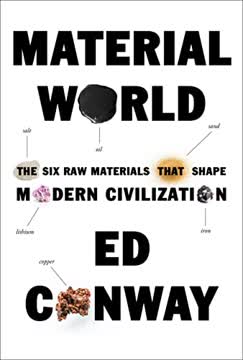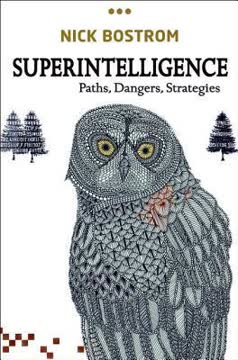Key Takeaways
1. Technology is a Programming of Nature's Phenomena
A technology is a phenomenon captured and put to use.
Nature's building blocks. At its core, technology is the orchestration of natural phenomena to achieve human purposes. From the simple use of fire for cooking to the complex manipulation of quantum effects in modern electronics, all technologies harness one or more effects found in nature. This fundamental principle explains why technological progress is so closely tied to scientific understanding – as we uncover new phenomena, we gain new tools to create technologies.
Layers of complexity. Technologies rarely use phenomena in their raw form. Instead, they combine multiple effects, often in intricate ways, to achieve their purpose. For example, a modern smartphone utilizes electromagnetic waves for communication, quantum tunneling in transistors for processing, and electrochemistry in batteries for power. This layering of phenomena allows for increasingly sophisticated and capable technologies.
- Examples of harnessed phenomena:
- Heat for cooking and metallurgy
- Electromagnetic waves for communication
- Chemical reactions for medicine and materials
- Quantum effects for computing
2. All Technologies are Combinations of Existing Elements
Novel technologies are created out of building blocks that are themselves technologies, and become potential building blocks for the construction of further new technologies.
Recursive structure. Technologies are not standalone inventions but combinations of existing components, which are themselves technologies. This recursive nature means that even the most complex devices can be broken down into simpler parts, each with its own purpose and function. Understanding this structure is crucial for innovation and problem-solving in technology.
Innovation through recombination. The combinatorial nature of technology explains why innovation often comes from bringing together ideas or components from different fields. It also suggests that as the number of existing technologies grows, the potential for new combinations – and thus new innovations – increases exponentially. This principle underlies the accelerating pace of technological change we observe in the modern world.
- Key implications:
- Every new technology opens up possibilities for future innovations
- Cross-disciplinary knowledge can lead to breakthroughs
- The potential for innovation grows with technological progress
3. Domains: Bodies of Technology that Shape Possibilities
A domain will be any cluster of components drawn from in order to form devices or methods, along with its collection of practices and knowledge, its rules of combination, and its associated way of thinking.
Technological ecosystems. Domains are not just collections of related technologies, but entire ecosystems of knowledge, practices, and possibilities. They shape how engineers and inventors think about problems and solutions within their field. Understanding domains is crucial for grasping how technology evolves and why certain innovations emerge when they do.
Redomaining as innovation. Some of the most significant technological advances come not from improving existing technologies, but from redomaining – applying principles or components from one domain to solve problems in another. This process can lead to revolutionary changes, opening up entirely new possibilities that were previously unimaginable.
- Examples of technological domains:
- Electronics
- Biotechnology
- Materials science
- Information technology
- Impact of domains:
- Define the "possible" in a given era
- Shape industries and economic structures
- Influence problem-solving approaches
4. The Process of Invention: Linking Needs with Effects
Invention consists in linking a need with some effect to satisfactorily achieve that need.
Problem-solution pairing. Invention is not a mysterious process of genius, but a systematic linking of identified needs with potential solutions based on known effects or phenomena. This understanding demystifies innovation and suggests ways to foster it more effectively.
Recursive problem-solving. The invention process is often recursive, with each potential solution revealing new challenges that must be addressed. This iterative nature explains why significant inventions often take years of development and refinement before becoming practical.
- Key stages in invention:
- Identifying a need or problem
- Recognizing potential effects or phenomena that could address the need
- Conceptualizing a principle that links the need and effect
- Developing practical implementations of the principle
- Refining and optimizing the solution
5. Structural Deepening: How Technologies Become More Complex
By adding subsystems to work around such limitations, technologies elaborate as they evolve. They add "depth" or design sophistication to their structures.
Evolution through complication. As technologies mature, they often become more complex rather than simpler. This process, called structural deepening, occurs as engineers add subsystems to overcome limitations, enhance performance, or expand functionality. Understanding this tendency helps explain why mature technologies can be challenging to displace, even when simpler alternatives emerge.
Performance vs. complexity trade-off. Structural deepening allows technologies to achieve higher performance or broader capabilities, but at the cost of increased complexity. This trade-off can create opportunities for disruptive innovations that offer simpler solutions to core problems, potentially displacing more complex incumbent technologies.
- Reasons for structural deepening:
- Overcoming performance limitations
- Adapting to varying conditions
- Enhancing safety and reliability
- Expanding functionality
- Examples:
- Aircraft engines becoming more sophisticated over time
- Smartphones integrating more sensors and features
6. Combinatorial Evolution: Technology Creates Itself
Technology creates itself out of itself.
Self-generating progress. The evolution of technology is a self-reinforcing process. New technologies become building blocks for future innovations, creating an ever-expanding set of possibilities. This principle explains the accelerating pace of technological change and suggests that innovation potential grows exponentially over time.
Non-linear development. Technological progress is not smooth or predictable. Instead, it often proceeds in bursts, with periods of rapid advancement followed by consolidation. This pattern emerges from the combinatorial nature of innovation, where a single breakthrough can unlock multiple new possibilities.
- Key aspects of combinatorial evolution:
- Existing technologies serve as building blocks for new ones
- The potential for innovation grows with the number of existing technologies
- Progress can be unpredictable and non-linear
- Implications:
- Long-term technological forecasting is inherently difficult
- Cross-disciplinary knowledge becomes increasingly valuable
- The pace of change is likely to continue accelerating
7. The Economy as an Expression of its Technologies
The economy is an expression of its technologies.
Technology shapes economic structures. Rather than seeing the economy as a container for technologies, we should understand it as fundamentally shaped by the technologies it encompasses. This perspective helps explain why technological revolutions lead to profound economic and social changes.
Structural economic change. As new technologies emerge and spread, they don't just improve efficiency within existing economic structures. Instead, they often require and create entirely new arrangements, from business models to regulatory frameworks. This process of structural change is key to understanding long-term economic development.
- Ways technology shapes the economy:
- Defines possible products and services
- Influences organizational structures and business models
- Shapes labor markets and skill requirements
- Drives the creation of new industries and the decline of others
- Examples of technology-driven economic change:
- Industrialization and the rise of factories
- Digital transformation and the platform economy
8. Technology's Paradox: Hope and Unease in Our Relationship with Nature
We hope in technology to make our lives better, to solve our problems, to get us out of predicaments, to provide the future we want for ourselves and our children. Yet, as humans, we are attuned not to this thing we hope in—not to technology—but to something different.
The trust-hope dilemma. Humans face a fundamental tension in their relationship with technology. We rely on it for progress and solutions to our problems, yet we often feel more at home with nature. This paradox underlies much of our ambivalence towards technological advancement.
Navigating the future. As technology becomes more powerful and pervasive, particularly in areas like genetic engineering and artificial intelligence, this tension is likely to intensify. Resolving it requires a nuanced approach that embraces technological progress while remaining mindful of our deeper connection to the natural world.
- Sources of technological unease:
- Fear of losing control or agency
- Concerns about environmental impact
- Worries about social and ethical implications
- Balancing factors:
- Recognition of technology's benefits
- Efforts to develop more "natural" or sustainable technologies
- Ethical frameworks for technological development
Last updated:
FAQ
What's The Nature of Technology about?
- Exploration of Technology: The book explores the essence and evolution of technology, questioning what it is and how it develops over time. W. Brian Arthur provides a comprehensive theory of technology, emphasizing its interconnectedness and historical context.
- Combinatorial Evolution: Arthur introduces the concept of "combinatorial evolution," where new technologies emerge from the combination of existing ones. This highlights the importance of combination in technological advancement.
- Economic Interplay: The book discusses how technology and the economy evolve together, suggesting that technological advancements drive economic growth and transformation.
Why should I read The Nature of Technology?
- Deep Understanding: The book offers a comprehensive framework for understanding technology, making it accessible to both specialists and general readers. Arthur's insights help readers appreciate the complexities of technology in everyday life.
- Relevance to Current Issues: As technology increasingly shapes our world, understanding its nature and evolution is vital for navigating contemporary challenges. The book addresses the implications of technology on society, economy, and the environment.
- Engaging Writing Style: Arthur presents complex ideas in plain English, making the book approachable. His engaging narrative encourages readers to think critically about the role of technology in their lives.
What are the key takeaways of The Nature of Technology?
- Technology as Combination: A central takeaway is that technology evolves through the combination of existing technologies, which Arthur refers to as "combinatorial evolution." This principle highlights the interconnectedness of technological advancements.
- Recursive Structure: Technologies have a recursive structure, meaning that each component of a technology can also be considered a technology in its own right. This insight emphasizes the complexity and depth of technological systems.
- Role of Phenomena: Arthur argues that technologies are fundamentally based on the exploitation of natural phenomena. Understanding these phenomena is crucial for grasping how technologies are developed and utilized.
How does W. Brian Arthur define technology in The Nature of Technology?
- Means to Fulfill Purpose: Arthur defines technology as a means to fulfill a human purpose, encompassing devices, methods, and processes. This broad definition allows for a wide range of technologies to be considered.
- Assemblage of Practices: He describes technology as an assemblage of practices and components, highlighting the collaborative nature of technological development. This perspective emphasizes the importance of collective knowledge in creating technology.
- Collection of Devices: Arthur refers to technology as the totality of devices and engineering practices available to a culture, reflecting the cumulative nature of technological advancement.
What is "combinatorial evolution" in The Nature of Technology?
- Combination of Technologies: Combinatorial evolution is the process by which new technologies arise from the combination of existing ones. This allows for the gradual development of more complex technologies over time.
- Recursive Structure: Technologies consist of components that are themselves technologies, creating a recursive structure. This insight reveals how technologies build upon one another, leading to innovation and advancement.
- Capturing Phenomena: The evolution of technology is driven by the capture and harnessing of natural phenomena. This principle highlights the importance of understanding the effects that technologies exploit.
How does The Nature of Technology explain the relationship between technology and the economy?
- Mutual Influence: Arthur argues that the economy and technology are inextricably linked, with each influencing the other. As new technologies emerge, they reshape economic structures, while economic conditions can drive technological innovation.
- Structural Change: The introduction of new technologies leads to structural changes in the economy, creating new industries and altering existing ones. This dynamic process reflects the ongoing evolution of both technology and economic arrangements.
- Opportunity Niches: Technologies create opportunity niches for further innovations, which in turn drive economic growth. This interplay between technological advancement and economic adaptation is a central theme in understanding modern economies.
What role do phenomena play in technology according to The Nature of Technology?
- Foundation of Technology: Arthur asserts that all technologies are based on the exploitation of natural phenomena, which serve as the foundation for technological development. This connection emphasizes the relationship between technology and the natural world.
- Orchestration of Effects: Technology is described as a programming of phenomena to fulfill human purposes, highlighting the orchestration of various effects in creating functional technologies.
- Discovery and Utilization: The process of uncovering phenomena is crucial for technological advancement, as new effects lead to new technologies. Scientific inquiry and experimentation contribute to the discovery of these phenomena.
What is the "pyramid of causality" in The Nature of Technology?
- Foundation of Technology: The pyramid of causality refers to the idea that every new technology is supported by a foundation of existing technologies and knowledge. This concept illustrates how innovations are built upon previous advancements.
- Complex Interdependencies: This pyramid includes not only direct predecessors but also supporting principles, components, and the interactions among people involved in the technological process.
- Implications for Invention: Understanding the pyramid of causality helps clarify why certain technologies emerge when they do, emphasizing the importance of timing and the availability of necessary components and knowledge.
How does W. Brian Arthur differentiate between standard engineering and invention in The Nature of Technology?
- Standard Engineering: Arthur describes standard engineering as the process of designing and constructing new instances of known technologies. This involves problem-solving and applying existing knowledge to create functional solutions.
- Invention: In contrast, invention is characterized by the creation of radically new technologies that utilize different principles. This process often involves linking a need with a novel effect or principle to achieve a specific purpose.
- Cumulative Process: Both standard engineering and invention contribute to technological evolution, with standard engineering providing solutions that can become building blocks for future innovations.
What role do "opportunity niches" play in technological evolution according to The Nature of Technology?
- Definition of Opportunity Niches: Opportunity niches are unmet needs or problems that arise within the context of existing technologies. These niches create demand for new solutions and innovations, driving the evolution of technology.
- Creation of New Technologies: As technologies evolve, they often generate new opportunity niches that call for further innovations. This process illustrates the reciprocal relationship between technology and the needs it creates.
- Historical Context: Opportunity niches are not static; they change as technologies develop and societal needs evolve. This dynamic nature of opportunity niches is crucial for understanding how technological advancements emerge over time.
What is the significance of "structural deepening" in technological development as discussed in The Nature of Technology?
- Definition of Structural Deepening: Structural deepening refers to the process by which technologies become more complex and sophisticated over time. This complexity arises from the addition of new components and subsystems that enhance performance and functionality.
- Evolution of Technologies: As technologies mature, they often require additional systems to address limitations and improve efficiency. This process of deepening contributes to the overall evolution of technology and its increasing complexity.
- Implications for Innovation: Understanding structural deepening helps clarify how technologies adapt to changing needs and environments. This adaptability is crucial for fostering innovation and ensuring that technologies remain relevant in a rapidly evolving landscape.
What are the best quotes from The Nature of Technology and what do they mean?
- "Technology creates our world.": This quote emphasizes the profound impact of technology on shaping human existence and societal structures. It highlights the idea that technology is not just a tool but a fundamental force in defining our reality.
- "Technologies consist of other technologies.": This statement underscores the recursive nature of technology, where new innovations are built upon existing ones. It reflects the interconnectedness of technological development and the importance of combination in evolution.
- "A technology is a phenomenon captured and put to use.": This quote encapsulates Arthur's definition of technology, emphasizing the role of natural phenomena in driving technological advancement. It highlights the idea that technology is fundamentally about harnessing and utilizing the effects of nature.
Review Summary
The Nature of Technology receives mostly positive reviews for its insightful analysis of technology's evolution and impact on society. Readers appreciate Arthur's clear framework for understanding technology as combinations of existing components and his exploration of how technology shapes economies. Some find the writing dry or repetitive, but many praise the book's depth and originality. Critics note that the abstract concepts can be challenging to grasp, while supporters highlight the book's potential to change one's perspective on technology and innovation.
Similar Books








Download PDF
Download EPUB
.epub digital book format is ideal for reading ebooks on phones, tablets, and e-readers.




